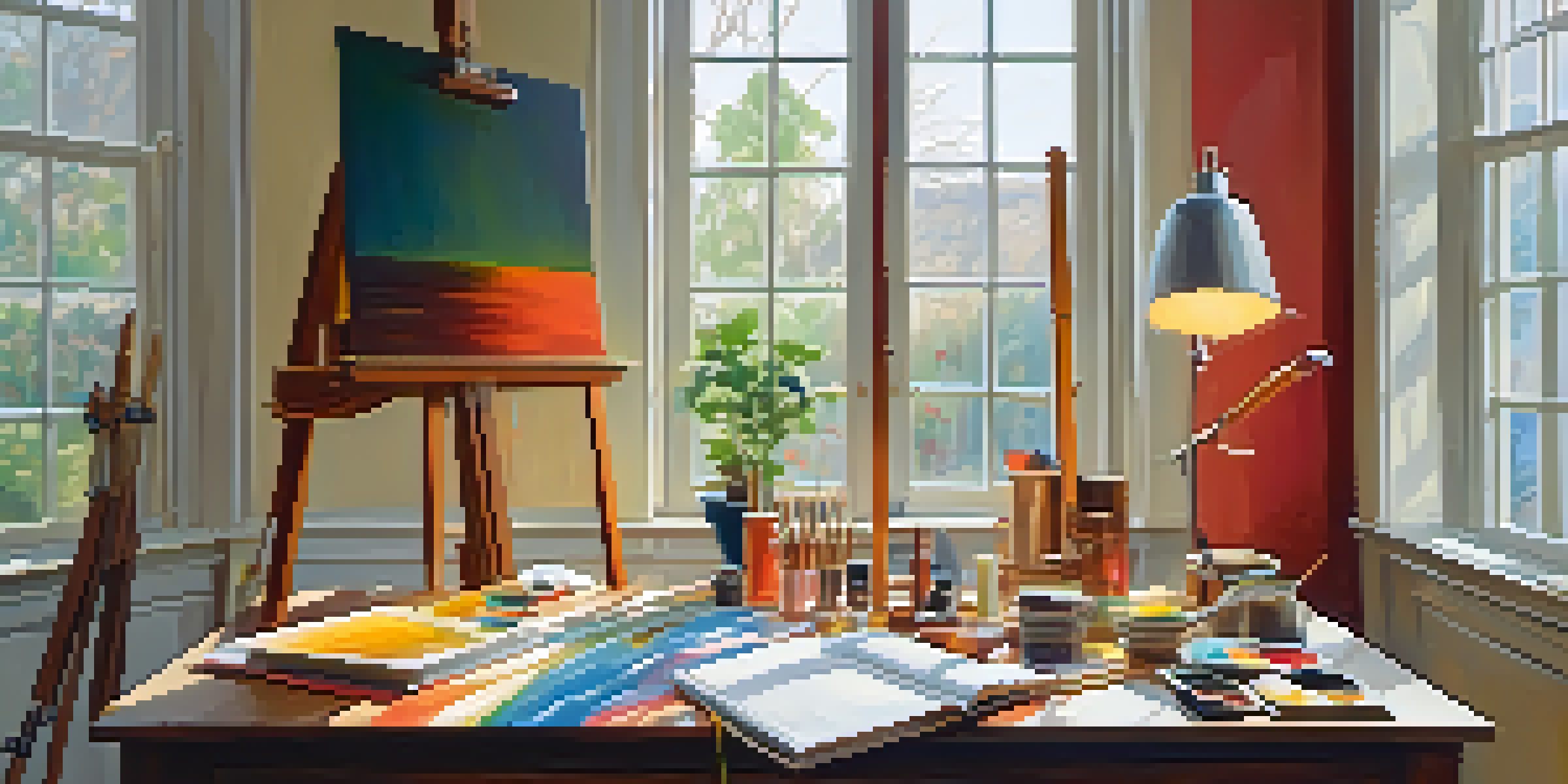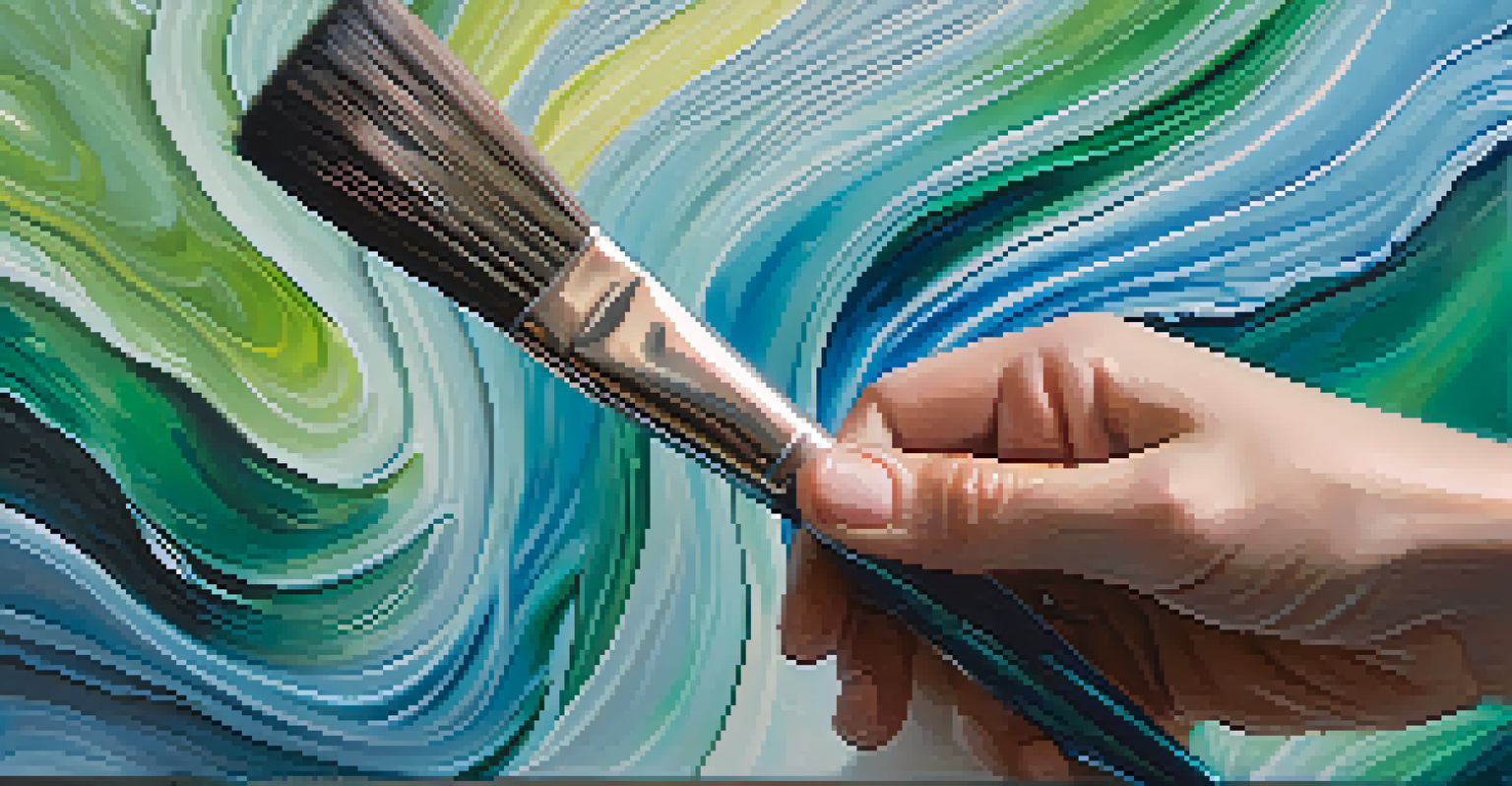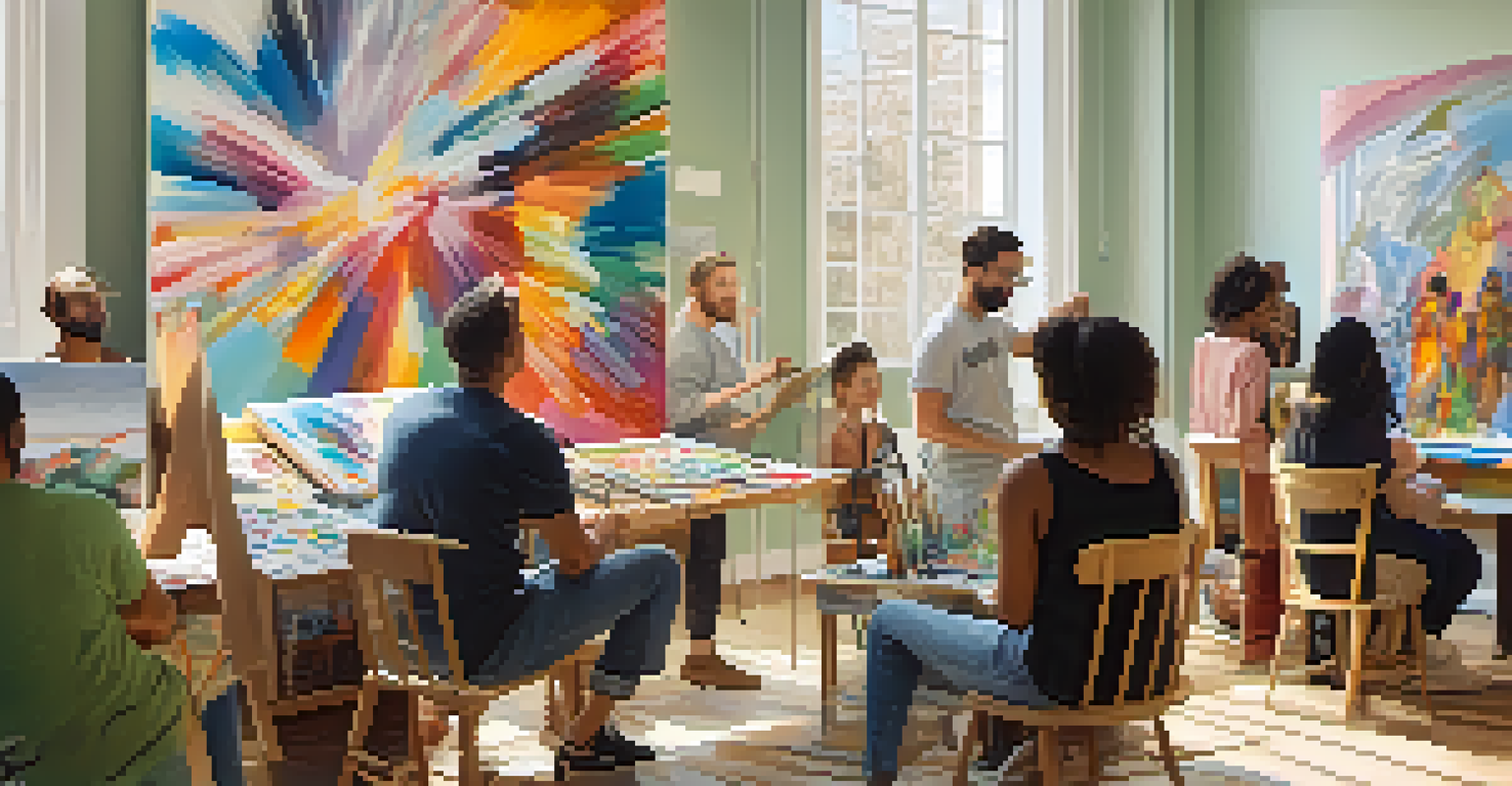The Benefits of Painting in Treating Depression and Sadness

Understanding the Link Between Art and Emotions
Art has a unique ability to express what words often cannot. For many, painting serves as a visual language, channeling emotions that might be too heavy to articulate. This connection between art and emotion can be particularly powerful for those experiencing depression or sadness, allowing for a deeper understanding of their feelings.
Art is the most beautiful of all lies.
When you pick up a brush, you’re not just creating something visually appealing; you’re engaging in a process that promotes emotional release. This is especially relevant in moments of despair, where the act of painting can provide a sense of relief and clarity. The colors and strokes become a reflection of one’s inner turmoil, transforming pain into something tangible.
Moreover, painting can foster a sense of presence. In a world where anxiety often pulls us into the past or future, immersing oneself in the creative process can bring a moment of peace. This mindfulness aspect of painting helps ground individuals, offering a temporary escape from their worries.
The Therapeutic Effects of Color and Creativity
Color psychology suggests that different hues can evoke various emotional responses. For instance, warm colors like red and yellow can energize and uplift, while cooler tones like blue and green often provide a calming effect. By consciously choosing colors that resonate with one's mood, individuals can influence their emotional state during the creative process.

Engaging in painting allows for the exploration of creativity, which can be incredibly therapeutic. Creating art gives people the freedom to experiment without the fear of judgment or failure. This creative outlet can foster a sense of accomplishment, boosting self-esteem and enhancing overall well-being.
Art as Emotional Expression
Painting allows individuals to express complex emotions that words often fail to convey.
Additionally, creativity has been shown to stimulate the brain’s reward center, releasing feel-good chemicals such as dopamine. This natural high can help counteract feelings of sadness and hopelessness, making painting not just an act of creation but also a source of joy and fulfillment.
Painting as a Form of Emotional Release
One of the most profound benefits of painting is its ability to serve as an emotional release valve. When individuals express their feelings through brush strokes, it can lead to catharsis, helping them process and release pent-up emotions. This act of externalizing feelings can be incredibly healing, especially for those who struggle to communicate their inner thoughts verbally.
Every artist dips his brush in his own soul, and paints his own nature into his pictures.
By translating feelings into colors and shapes, one can confront feelings of sadness or despair in a constructive way. This transformation process can make overwhelming emotions feel more manageable, providing a sense of control in times of chaos. It’s like turning your personal storm into a beautiful painting that tells your story.
Moreover, many artists find solace in the act of creating. Each brushstroke can signify progress, allowing individuals to track their emotional journey. This tangible representation of their feelings can help them reflect on their experiences, leading to greater self-awareness and emotional growth.
Building Connections Through Shared Artistic Experiences
Art has a wonderful way of bringing people together, and painting is no exception. Engaging in group painting sessions can foster a sense of community, providing emotional support through shared experiences. This connection with others can combat feelings of isolation that often accompany depression.
Workshops or art classes create a space where individuals can express themselves freely while also learning from one another. These interactions can lead to meaningful conversations about mental health, reducing stigma and promoting understanding. In essence, painting becomes a bridge, connecting hearts and minds.
Therapeutic Benefits of Creativity
Engaging in painting can enhance self-esteem and release feel-good chemicals, providing joy and fulfillment.
Furthermore, sharing artwork can bring validation and encouragement. When someone displays their painting, it opens the door for others to appreciate their journey, creating a safe environment for vulnerability and healing. This shared experience can reinforce the idea that no one is alone in their struggles.
Mindfulness and Being in the Moment Through Painting
Painting encourages mindfulness, a practice that involves focusing on the present moment. When individuals are engaged in creating art, they often find themselves absorbed in the process, which can help quiet racing thoughts. This mindfulness can be particularly beneficial for those grappling with depression, as it offers a temporary reprieve from negative thinking patterns.
As you immerse yourself in painting, you become attuned to your senses—the texture of the canvas, the smell of the paint, and the sound of the brush gliding across the surface. This sensory engagement not only enriches the artistic experience but also anchors you in the here and now, promoting a sense of calm and clarity.
Moreover, cultivating mindfulness through painting can lead to greater emotional regulation. By focusing on the act of painting, individuals may find it easier to manage their emotions, reducing the intensity of feelings of sadness or anxiety. This practice can ultimately empower them to navigate their emotions with greater ease.
Creating a Safe Space for Self-Expression
One of the most significant benefits of painting is the safe space it creates for self-expression. In a world that often demands conformity, art allows individuals to express their unique perspectives and experiences. This freedom can be liberating, particularly for those who feel trapped by their circumstances.
When individuals are encouraged to paint without restrictions or preconceived notions, they can explore their identity and feelings authentically. This unfiltered self-expression can lead to profound insights and revelations about oneself, fostering personal growth and understanding.
Building Community Through Art
Group painting sessions foster connections and emotional support, helping combat feelings of isolation.
Additionally, a safe creative space can reduce anxiety and fear of judgment. Knowing that there are no right or wrong answers in art allows individuals to explore their emotions without the pressure of perfection. This acceptance can be incredibly healing, nurturing a sense of belonging and self-acceptance.
Finding Purpose and Routine Through Artistic Practice
Establishing a routine that includes painting can provide structure and purpose, which are often lacking in the lives of those dealing with depression. This intentional practice encourages individuals to set aside time for themselves, fostering a sense of commitment and personal care. Having that dedicated time can be a comforting anchor amidst the chaos of daily life.
Moreover, completing a painting can instill a sense of achievement, boosting confidence and motivation. Each finished piece becomes a testament to their efforts, reminding them of their capabilities and resilience. This sense of purpose can be incredibly empowering, helping them regain control over their lives.

Incorporating painting into one’s daily routine can also serve as a form of self-care. It offers a moment of solitude and reflection, allowing individuals to check in with themselves. This practice not only nurtures their creativity but also emphasizes the importance of prioritizing mental health.